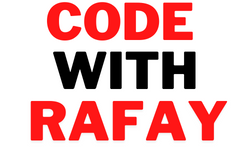What is Element in HTML?
A HTML component is a part of a HTML record that advises an internet browser how to structure and decipher a piece of the HTML report. HTML components can contain arranging guidelines, semantic importance, and content.
What is Element in HTML?
For instance, HTML components are utilized to mean record parts like headers, sections, and footers and to install content such like hyperlinks, text, and pictures. In spite of the fact that HTML can be utilized to give organizing guidelines, HTML principles unequivocally support involving CSS for this reason all things being equal.
What is Element in HTML?
A HTML component is frequently — yet not generally — made by opening and shutting HTML labels, which fold over a piece of content.
What is Element in HTML?
A HTML component is a kind of HTML (HyperText Markup Language) report part, one of a few sorts of HTML hubs (there are likewise text hubs, remark hubs and others).[vague] The principal utilized rendition of HTML was composed by Tim Berners-Lee in 1993 and there have since been numerous forms of HTML. The most regularly utilized variant is HTML 4.01, which became official norm in December 1999.[1] A HTML record is made out of a tree of straightforward HTML hubs, like text hubs, and HTML components, which add semantics and designing to parts of report (e.g., make text strong, sort out it into sections, records and tables, or implant hyperlinks and pictures). Every component can have HTML ascribes indicated. Components can likewise have content, including different components and text.
Components versus labels
As is for the most part perceived, the place of a component is shown as spreading over from a beginning tag and is ended by an end tag.[2] This is the situation for the majority, yet not all, components inside a HTML report. The qualification is expressly underlined in HTML 4.01 Detail:
What is Element in HTML?
Components are not labels. Certain individuals allude to components as labels (e.g., "the P tag"). Recall that the component is a certain something, and the tag (be it start or end tag) is another. For example, the HEAD component is consistently present, despite the fact that both beginning and end HEAD labels might be absent in the markup.[2]
Likewise the W3C Recommendadtion HTML 5.1 second Version expressly says:
Labels are utilized to delimit the beginning and end of components in the markup. (...) The beginning and end labels of specific ordinary components can be overlooked, (...)
The items in the component should be set between soon after the beginning tag (which may be suggested, in specific cases) and not long before the end tag (which once more, may be inferred, in specific cases).
— HTML 5.1 second Release § 8.1.2. Components § Labels
furthermore:
Certain labels can be discarded.
NOTE:
Overlooking a component's beginning tag (...) doesn't mean the component is absent; it is suggested, yet it is still there. For instance, a HTML record generally has a root <html> component, regardless of whether the string <html> doesn't show up anyplace in the markup.
The fundamental components of a HTML page are:
A text header, meant utilizing the <h1>, <h2>, <h3>, <h4>, <h5>, <h6> labels.
A passage, indicated utilizing the <p> tag.
A level ruler, indicated utilizing the <hr> tag.
A connection, indicated utilizing the <a> (anchor) tag.
A rundown, indicated utilizing the <ul> (unordered rundown), <ol> (requested list) and <li> (list component) labels.
A picture, signified utilizing the <img> tag
A divider, signified utilizing the <div> tag
A text range, meant utilizing the <span> tag
The following couple of pages will give an outline of these fundamental HTML components.
Every component can likewise have credits - every component has an alternate arrangement of qualities pertinent to the component. There are a couple of worldwide components, the most widely recognized of them are:
id - Signifies the extraordinary ID of a component in a page. Utilized for finding components by utilizing joins, JavaScript, and that's just the beginning.
class - Indicates the CSS class of a component. Made sense of in the CSS Fundamentals instructional exercise.
style - Indicates the CSS styles to apply to a component. Made sense of in the CSS Essentials instructional exercise.
information x credits - A general prefix for credits that store crude data for automatic purposes. Made sense of in definite in the Information Credits area.
In HTML, a component is a segment of a HTML record. Some HTML components address noticeable parts on a page, like text, pictures, or fastens, while others indicate various segments of the page or give meta-data about the record.
In the actual code, HTML components are made with labels. A HTML label comprises of text between point sections (<>).
Most HTML components comprise of three sections:
The initial tag (or begin tag) marks where the component's substance starts (<p> in the model above).
The end tag (or end tag) denotes the finish of the component's substance (</p> above). The end tag is indistinguishable from the initial tag with the expansion of a forward cut (/) after the principal point section.
The substance is put between the component's opening and shutting labels (This is section text. above).
a chart of how html labels work to creat HTML components
Note that HTML labels are not case-touchy. You could compose <p> as <P> and it would in any case work. Notwithstanding, most designers compose lowercase HTML labels since it's simpler and more predictable.
Void HTML Components
While most HTML components are composed with an opening and shutting tag, a few components comprise of a solitary tag and don't have shutting labels or content. These are called void components.
One void component you'll see frequently is the line break component, which adds a line break between text. The line break component is made with the void <br> tag


.png)


.png)
.png)
0 Comments